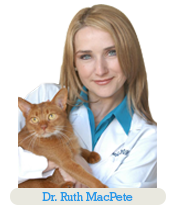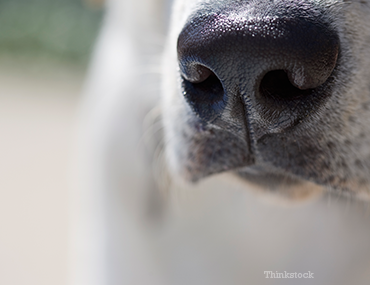
Have you ever wondered why dogs eat dirt? Or why some have the disgusting habit of eating poop? The abnormal habit of ingesting non-nutritive items like dirt, sand, clay, paper, chalk, fabric or plastic is referred to as pica.
Coprophagia refers to the ingestion of feces and is the most common form of pica in dogs. Yes, poop eating! So why do so many dogs seem to delight in dining on these odd, and in the case of feces, disgusting things?
What causes pica?
Nutitional deficiencies, electrolyte imbalances and starvation can lead to pica and coprophagia. However, not all animals with pica or coprophagia have an underlying medical condition. In fact, coprophagia is considered normal behavior for canine mothers.
Moms lick their puppies’ bottoms to clean them and to stimulate their puppies to eliminate. Not surprisingly, they often ingest puppy poop in the process. The things moms do for their babies! But moms are not alone; young puppies can also exhibit coprophagia. Most puppies outgrow this habit but some do not.
Then there is the cat poop issue. Everyone knows cat poop is a dog delicacy. Ever wonder why? The typical feline diet contains a higher quantity of protein than dog food making their feces a protein-rich energy bar for dogs.
Is pica a problem?
Okay, we all know poop eating is gross—but is it dangerous? Coprophagia, though disgusting is usually not harmful. However, ingesting feces from another animal can expose your pet to a number of different intestinal parasites. In the case of Pica, ingesting things like rocks, chalk, fabric, sand, string and plastic can lead to gastric upset, vomiting, diarrhea and even worse—intestinal obstructions.
How to stop pica
The best way to prevent your dog from ingesting non-nutritive things like plastic, rocks and string is to limit their access to these objects. Be sure to keep things your dog is attracted to out of reach. In the case of coprophagia, there are several things you can do to help stop this gross behavior:

- There are products sold at pet stores such as Deter™ and For-Bid™ that are designed to eliminate this yucky behavior. They are given to your dog orally and then pass through the digestive system to give their stool an unpleasant taste (as if poop needs something extra to make it taste bad). Meat tenderizer can also be sprinkled on your dog’s food for the same effect. Speak with your veterinarian before trying anything to be sure it is safe for your particular dog.
- Pick-up after your dog immediately in order to remove the temptation
- Prevent your dog from getting into your cat’s litter box by putting it somewhere inaccessible to them
Of course, these techniques only prevent your dog from eating his own stool so watch him closely in public areas.
How do I rule out medical causes for pica?
If your pet starts eating things besides their food and treats, a visit to the veterinarian is in order. Your veterinarian will make sure that your pet is not suffering from any nutritional deficiencies or electrolyte imbalances. Once they rule-out any underlying causes, they can help you combat your pet’s strange behavior. If your dog has a craving for feces, make sure they are on year-round monthly parasite preventatives and take them to your veterinarian annually to have their stool checked for parasites.
If you have any questions or concerns, you should always visit or call your veterinarian -- they are your best resource to ensure the health and well-being of your pets.
